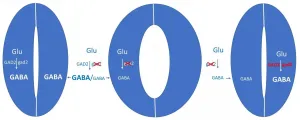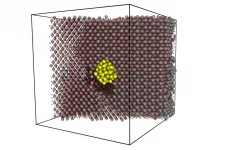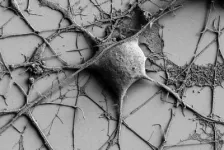INFORMATION:
First steps towards revolutionary ULTRARAM™ memory chips
2021-03-29
(Press-News.org) A new type of universal computer memory - ULTRARAM™ - has taken a step closer towards development with a successful experiment by Lancaster physicists.
Professor Manus Hayne, who is leading the research, commented: "These new results confirm the astonishing properties of ULTRARAM™, allowing us to demonstrate its potential as a fast and efficient non-volatile memory with high-endurance."
Currently, the two main types of memory, dynamic RAM (DRAM) and flash, have complementary characteristics and roles:-
DRAM is fast, so used for active (working) memory but it is volatile, meaning that information is lost when power is removed. Indeed, DRAM continually 'forgets' and needs to be constantly refreshed.
Flash is non-volatile, allowing you to carry data in your pocket, but is very slow and wears out. It is well-suited for data storage but can't be used for active memory.
"Universal memory" is a memory where the data is very robustly stored, but can also easily be changed; something that was widely considered to be unachievable until now.
The Lancaster team has solved the paradox of universal memory by exploiting a quantum mechanical effect called resonant tunnelling that allows a barrier to switch from opaque to transparent by applying a small voltage.
Their new non-volatile RAM, called ULTRARAM™, is a working implementation of so-called 'universal memory', promising all the advantages of DRAM and flash, with none of the drawbacks.
In their latest work, published in IEEE Transactions on Electron Devices, the researchers have integrated ULTRARAM™ devices into small (4-bit) arrays for the first time. This has allowed them to experimentally verify a novel, patent-pending, memory architecture that would form the basis of future ULTRARAM™ memory chips.
They have also modified the device design to take full advantage of the physics of resonant tunnelling, resulting in devices that are 2,000 times faster than the first prototypes, and with program/erase cycling endurance that is at least ten times better than flash, without any compromise in data retention.
ELSE PRESS RELEASES FROM THIS DATE:
Plants remember drought
2021-03-29
"I've been studying how plants regulate their water balance for over 35 years. To find a completely new and unexpected way for saving water has certainly been one of the most surprising discoveries in my life." So says Professor Rainer Hedrich, plant scientist and biophysicist from Julius-Maximilians-Universität (JMU) Würzburg in Bavaria, Germany.
Hedrich's group discovered this new strategy together with researchers from the University of Adelaide in Australia. The results have been published in the journal Nature Communications.
GABA quantity as stress memory
The publication shows: plants use the signalling molecule GABA (gamma-aminobutyric acid) to remember the dryness of a day. The drier it is, the ...
An improved safety standard for bionic devices
2021-03-29
Applied physicists at the University of Sydney have proposed new standards to measure moisture leaks into bionic devices such as pacemakers, cochlear hearing implants and retinal replacements.
The researchers, who received an industry partnership funding through the Australian Research Council to undertake the study, say the new moisture standards could give the wearers of bionic implants extra confidence in the operation of the life-changing devices. They also say that the improved moisture-testing regime could be used in the emerging renewable energy industry where new-generation solar cells require high standards of humidity control.
Bionic implants must be able to operate successfully in moist environments ...
New study finds satellites contribute significant light pollution to night skies
2021-03-29
Scientists reported new research results today suggesting that artificial objects in orbit around the Earth are brightening night skies on our planet significantly more than previously understood.
The research, accepted for publication in Monthly Notices of the Royal Astronomical Society: Letters, finds that the number of objects orbiting Earth could elevate the overall brightness of the night sky by more than 10 percent above natural light levels across a large part of the planet. This would exceed a threshold that astronomers set over 40 years ago for considering a location "light polluted".
"Our primary motivation was to estimate the potential contribution to night sky brightness from external sources, such ...
Scientists develop test to detect the virus that causes COVID-19 even when it mutates
2021-03-29
A team of scientists led by Nanyang Technological University, Singapore (NTU Singapore) has developed a diagnostic test that can detect the virus that causes COVID-19 even after it has gone through mutations.
Called the VaNGuard (Variant Nucleotide Guard) test, it makes use of a gene-editing tool known as CRISPR, which is used widely in scientific research to alter DNA sequences and modify gene function in human cells under lab conditions, and more recently, in diagnostic applications.
Since viruses have the ability to evolve over time, a diagnostic test robust against potential mutations ...
Scientists find explanation for abnormally fast release of gas from nuclear fuel
2021-03-29
Scientists at MIPT have found a possible explanation for the anomalously fast release of gas from nuclear fuel. Supercomputer simulations have uncovered an unexpected mechanism for accelerating the escape of gas bubbles from the uranium dioxide crystal matrix to the surface. The result points the way to eliminate the paradoxical discrepancy of several orders of magnitude between existing theoretical models and experimental results. The paper was published in the Journal of Nuclear Materials.
The diffusion of gas bubbles during reactor operation is one of the important topics in nuclear power relating to radiation safety. Bubbles of gaseous fission products (mainly xenon), accumulating in the fuel, affect many of its properties. Therefore, it is important, ...
Scientists use nanotechnology to detect bone-healing stem cells
2021-03-29
Researchers at the University of Southampton have developed a new way of using nanomaterials to identify and enrich skeletal stem cells - a discovery which could eventually lead to new treatments for major bone fractures and the repair of lost or damaged bone.
Working together, a team of physicists, chemists and tissue engineering experts used specially designed gold nanoparticles to 'seek out' specific human bone stem cells - creating a fluorescent glow to reveal their presence among other types of cells and allow them to be isolated or 'enriched'.
The researchers concluded their new technique is simpler and quicker than other methods and up to 50-500 times more effective at enriching stem cells.
The study, led by Professor ...
Meat and dairy companies slow to commit to net-zero emissions, new analysis finds
2021-03-29
The vast majority of the world's largest meat and dairy companies have not made an explicit commitment to achieving net-zero emissions by 2050, finds a new analysis by researchers at New York University.
The study, which appears in the journal Climatic Change, examines the climate impacts of the biggest 35 largest meat and dairy companies around the globe as well as their influence in shaping political responses to climate change.
It is the first peer-reviewed study to assess climate responsibilities of the largest meat and dairy companies.
"Large meat and dairy companies are not doing enough to tackle climate change, and countries are not doing enough in terms of holding them accountable," says Jennifer ...
Pioneering pollinator study offers clues to Darwin's 'abominable mystery'
2021-03-29
Research into the flower preferences of pollinating moths may have delivered a vital clue to the simple factors needed for the emergence of new species.
Strong coevolutionary relationships between plants and animal pollinators have long been recognised as a potential driver of high rates of speciation in the 275,000 extant flowering plants.
Shifts between pollinators, such as bumblebees, hummingbirds, hawkmoths and bats, often coincide with plant speciation events.
Each of these pollinator "guilds" is attracted by a different set of floral traits such as colour, patterns, scent, shape, and nectar reward, collectively known as a pollination ...
Differences in herpes virus symptoms may relate to variations in strain gene expression
2021-03-29
UNIVERSITY PARK, Pa. -- Why do some people with cold sores around their lips experience painful lesions, while others have no symptoms at all, yet still spread the virus? A new study conducted at Penn State finds that these differences could be due to variations in the way certain strains of herpes simplex (HSV-1) -- the virus that causes cold sores, as well as genital herpes -- activate gene expression in neurons.
"HSV-1 occurs in more than half the global population," said Moriah Szpara, associate professor of biology and biochemistry and molecular biology. "Not only does it cause recurrent problems, such as cold sores ...
Standing out: Unusual magnetic transition in perovskite oxide can help boost spintronics
2021-03-29
Transition metal perovskites oxides exhibit several desirable properties, including high-temperature superconductivity and electrocatalysis. Now, scientists at Tokyo Institute of Technology explore the structure and properties of a perovskite oxide, PbFeO3, in anticipation of the unusual charge distribution and exotic magnetic transitions displayed by such systems. They report two of the magnetic transitions, with a distinctive transition above room temperature and look into its causes, opening doors to potential applications in realizing new spintronic devices.
The advent of electronics has revolutionized our lives to an extent where it is impossible to imagine going about our day without relying on an electronic device in some form. What is even more remarkable, ...






